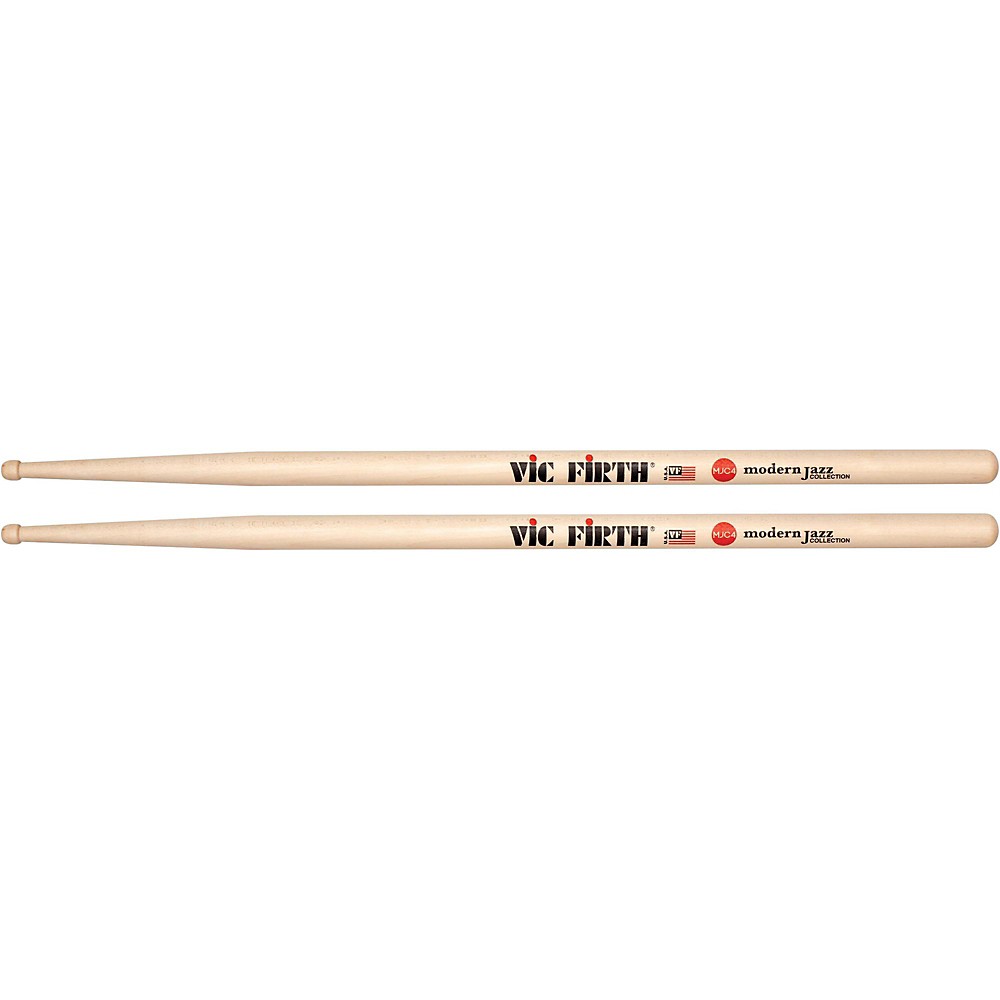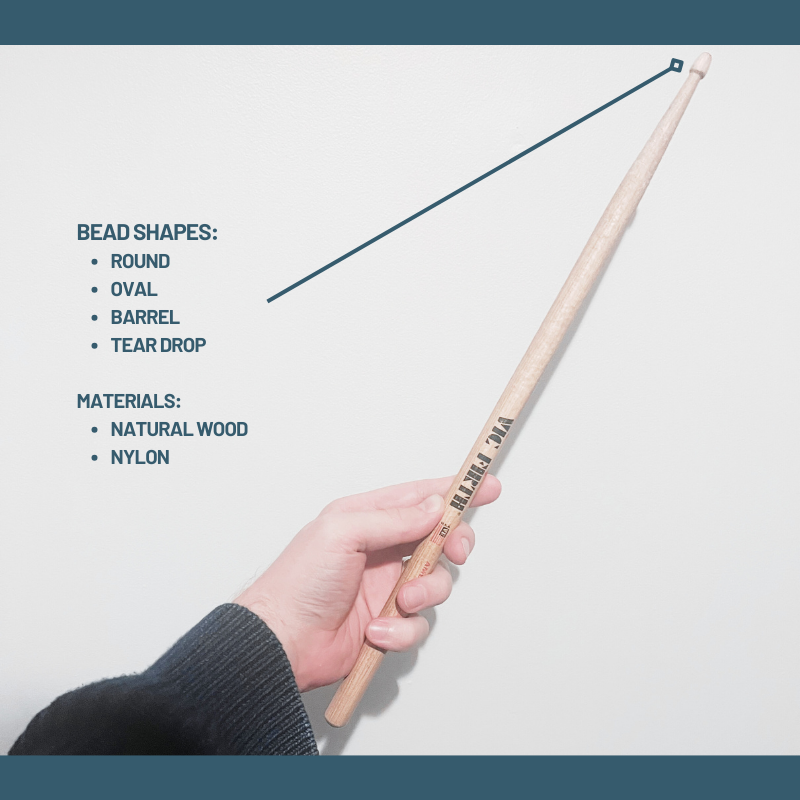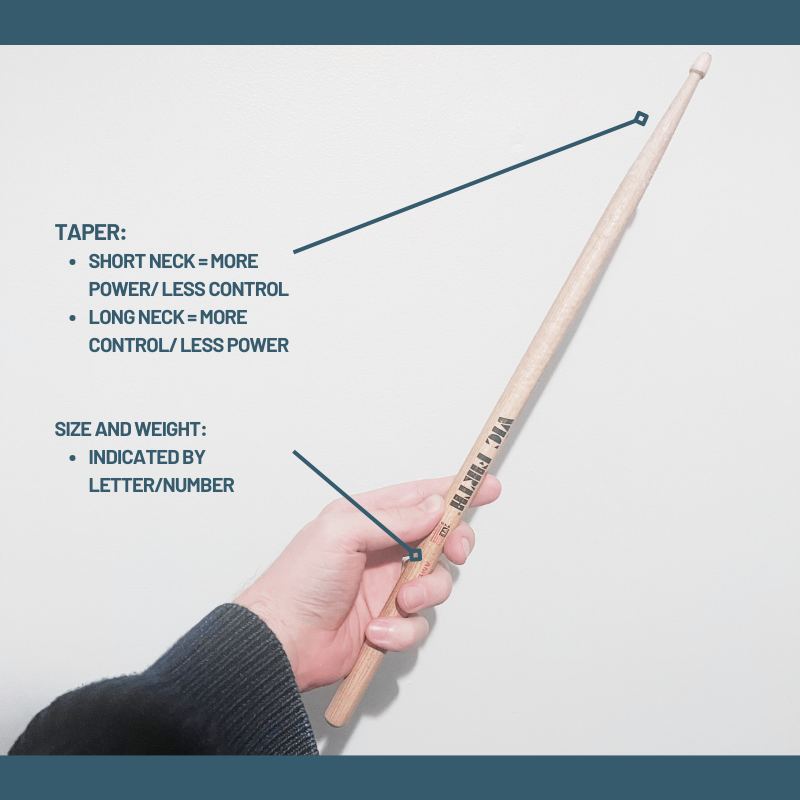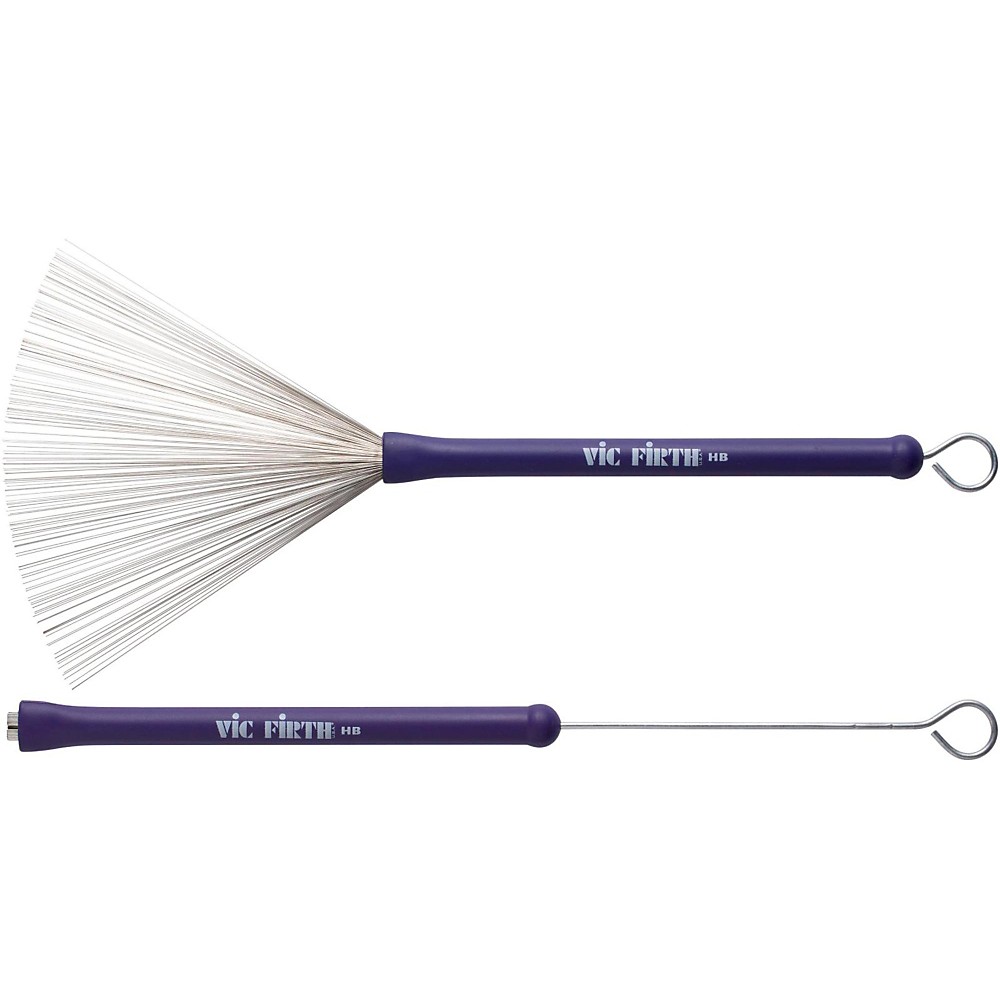How to Choose the Right Drum Sticks for Beginners (2023)
What do you need to consider when buying drum sticks? And what is the right pair for you?
This article contains affiliate links to products we love and recommend.
Whether you’re a beginner or a seasoned drummer, choosing drumsticks can be difficult. There are a lot of options on the market.
But making the right choice can transform your playing. So what do you need to consider when choosing sticks?
Here are the key things to think about when choosing a pair:
Material types
Bead shape and material
Length, weight and taper
Brand
Let’s look at these aspects in more detail as well as some things to avoid, and a look at speciality sticks.
Looking for a quick recommendation? Here’s our pick of the best drum sticks for beginners.
How to choose drum sticks infographic
Understanding Your Personal Preference
Choosing the right pair is very personal.
It depends on the music you are playing. Will you be smashing the kit about or tapping lightly on the cymbals? For jazz probably the latter, as light playing is more relevant.
But some genres that need more power behind the sticks too.
Your choice also depends on your body. Are you big and muscly, making the sticks look like puny pencils in your hands, or smaller and more delicate? What feels right to you will depend on your own body.
It depends on what you want it to sound, feel and even look like.
Do you want big powerful sounds that shake your audience to the core? Or do you want definition, letting people hear the subtlety of every stroke?
Experimenting with different sticks is important, but you need to start somewhere. So think about the aspects of drum sticks we describe below to make your choice.
Drum Stick Material Types
How to choose drum sticks: Material types. Pictured is hickory.
You’ll want to consider the kind of material your sticks are made from.
Drum sticks can be made from different materials that have different properties that affect how they sound and feel.
Most commonly drum sticks are made from wood, but they can also be made from synthetic materials too.
Hickory
Hickory is popular. This is due to its strength and resilience, but also versatility. It’s a great choice across musical styles that is likely to resist a bit of harder bashing, but also articulating the nuances of your playing.
Maple
Maple is also a popular choice because it offers good rebound and it’s lighter than hickory so you can choose a bigger stick without adding too much weight. This is good for lighter styles: jazz, funk and lighter rock. The Vic Firth Modern Jazz Collection are great staples for maple jazz sticks (and my current favourite sticks):
Oak
Oak is heavier, making it very durable, but also articulate. It can be great for big hitters who want to feel they’re wielding Thor’s hammer, or maybe just its longevity. If you don’t want to keep putting your hand in your pocket for new sticks, oak could be a good choice.
Carbon fibre
Carbon fiber is very durable and light. It may be too light for some, but can be a good choice if you are looking for a light stick that will last a long time.
Metal
Metal alloy is also known for durability but also increased rebound and shock absorption. Metal sticks produce a bright sound. The ergonomic construction lends itself to hard hitting styles as it is designed for comfort and endurance.
Bead Shapes and Materials
How to choose drum sticks: bead shapes and materials. Pictured is tear drop.
The shape of the tip (or “bead”) on your drum stick is also important for how it feels and sounds.
Round beads are great for cymbals because they produce a bright, articulate tone with plenty of articulation.
Oval beads are slightly darker sounding and have less rebound than round ones – they’re often used by drummers who want a softer attack on their cymbals.
The Vic Firth Modern Jazz Collection 4 (MJC4) sticks have a barrel tip to get great response and sound from your cymbals.
If you want more control over your cymbal sound, then teardrop-shaped beads might be a better option as they offer plenty of articulation but allow for less rebound than other shapes.
Bead Materials: Wood vs Nylon Tips
As well as the shape of the bead stick manufacturers also offer different materials for the tip of the stick:
Wooden tips are the classic material, creating the warm, vintage sound.
Nylon tips have a brighter sound with lots of cut through, but sounds less natural. The nylon does protect the tip of the stick which can make it more durable.
Replaceable nylon tips are available on some modern drumsticks. These are designed to increase the life of a drumstick: you’d only need to replace the tip, rather than the whole stick, when it deteriorates over time.
Understanding Stick Sizes: Length, Weight and Taper
How to choose drum sticks: length, weight and taper. Pictured is Vic Firth 5A.
Drum sticks are usually marked with a number and letter to help drummers choose the right stick.
When you’re choosing you’ll see most sticks have a number such as 5A, 7A, 5B and so on.
The number refers to the weight of the stick, and the letter refers to the diameter.
Higher numbers are lighter. Whereas letters further in the alphabet are thicker.
What is the best drum stick size for beginners?
5A is the most popular all round choice and a good choice for beginners, due to it’s medium weight and length, and versatility.
We recommend the Vic Firth American Classic 5A.
7A would be a good choice for jazz and lighter styles.
I also use a Vater 3A Fatback for practicing rudiments.
These are thick and heavy which helps to build the muscles in your hands.
When you change back to a smaller stick it feels easier to play fast and with control.
The numbering system dates back through the history of drumming where different sticks were designated for a specific purpose or band context.
The numbering and lettering system persists today, although many sticks are now numbered slightly differently outside of the traditional system.
How Do Stick Length and Weight Affect Your Drumming?
The length and weight of your drum sticks will affect how they feel in your hands and how easily you can play them.
Generally speaking, longer drum sticks give more reach but less control; shorter ones offer more control but less reach.
As for weight, heavier sticks tend to give more power but require more energy from the player; lighter ones require less energy but don’t always deliver as much volume or power.
This means it’s easier to play fast and intricately with lighter sticks, but more difficult to get a big sound.
Drum Stick Taper
You may also want to consider the taper on your sticks. The choice of combinations here starts to get bamboozling.
But in general, a shorter neck on the stick makes it top heavy.
This can give more beef to the sound and feel but makes it more difficult to play fast an intricate styles: for this you may want a longer taper, or neck.
Brands and Endorsees
The major brands of drums sticks are:
Vic Firth
ProMark
Vater
Ahead
Zildjian
These brands all have extensive ranges.
Often brands team up with an artist to create signature sticks to suit them.
This can be a great way to get started.
If there’s a particular drummer you like and want to emulate parts of their sound, the chances are you’ll like their sticks.
But remember to be critical: what works for them may not work for you.
So try them out but be honest with yourself about whether you like those sticks.
What to Avoid When Choosing Drum Sticks
Here are some of the traps you can fall into when choosing sticks:
Gimmicks
Ok this is just my opinion but there have been some gimmicks that have come and gone over the years. Ask yourself if the innovation that’s gone into the stick is really more important than key features above. I’ve made some mistakes here in the past.
Wrong sticks for the context
Getting the wrong sticks for your context should be avoided. You can play metal with light sticks if you like, but they won’t last long and that will cost you money. Similarly to play jazz you want a stick that allows articulation and definition on the cymbals, such as the Vic Firth Modern Jazz Collection.
Odd sticks
When you have a bag full of different types it’s easy to pick out an odd pair. Feels weird. It’s worth checking.
Buying new gear instead of practicing
Thinking that instead of practicing you just need new gear. Trust me I’ve been there. having gear that feels good is important. But the most important thing is to play and focus on improving your playing, whatever gear you’re using.
Speciality Sticks
Beyond typical drum sticks drummers will often have other types of sticks in their bag to create different sounds and feels.
Here are some common types:
Brushes
Brushes are used often in jazz but also other situations that require quiet playing. In jazz they create the swishing sound heard often in ballads. There are different brushes that you can use for jazz, ranging in the stiffness and angle of the wires. Personally I go for the Vic Firth Heritage brush because the wires are light, making it easy to get nice smooth sounds.
Mallets
Mallets are traditionally used on timpani drums but also can be used to create dramatic cymbal crescendos and warm muffled tom sounds. You may notice beautiful mallet work in Elvin Jones’ playing on Psalm from John Coltrane’s A Love Supreme. The large surface area and wooly material of the mallet head has low stick definition which creates the warm, resonant tone. Try these Vic Firth T1 Timpani Mallets which are a staple.
Rods
Rods are made from a tight bundle of small sticks. They are typically used in situations that require quiet playing, and some Latin styles. They sound bright with strong definition but low punch.
Broomsticks
Broomsticks are like rods but made of bundles of straw-like fibres. The have low stick definition and are typically quieter. They can be used to hit the drums or swipe like brushes creating a scratchy effect.
Value bundles
Vic Firth also offer a bundle which includes a stick bag as well as a pair of SD2 sticks with a rounded tip, timpani mallets, hard mallets for glockenspiel and medium mallets for hard keyboards such as marimbas.
This is a great starting place for beginners looking to play percussion and jazzy styles.
The verdict
It’s important to know what you like in a stick.
The factors in this article should give you a good place to start, but the most important thing is to experiment and discover what you like.
Even as an experienced drummer I often change my stick choice.
You want to be confident and you want it to feel good.
So thinking this through and finding what’s right for you is a worthwhile exercise. And of course, it will change over time.
Keep asking yourself what feels good.
If you’re wondering, my stick of choice is Vic Firth’s Modern Jazz Collection MJC 4.
These are maple with a barrel tip.
I like the definition on the cymbals and the weight and length are great for me.
Still exploring!











